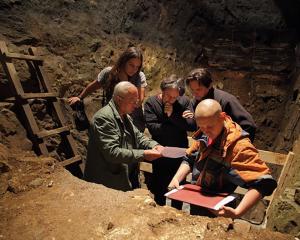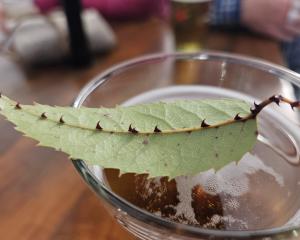
Sometimes an object’s coolness is in its story rather than its intrinsic nature. Take the waka huia that George Rae found in 1933.
George Rae was shepherding on Beaumont Station when he stumbled upon what the Mount Benger Mail described as "one of the most spectacular discoveries of Maori material ever made in Otago".
Seeking shelter from the rain, George had crawled into a cleft in a rocky outcrop near Talla Burn when he chanced upon a carefully wrapped package. After removing its outer wrappings, George would no doubt have been astounded to find a rather plain-looking wooden box containing bundles of feathers. Looking around, he further discovered the remnants of a finely woven flax kete that held a cut slat of baleen. The full impact of his find was not realised until the entire package was investigated by Dr Skinner at the Otago University Museum (as it was then known).
George Rae had found a tapa-lined waka huia containing 70 huia feathers, several small bundles of kaka feathers, and a tapa-wrapped wooden awl. The waka huia was wrapped inside an outer layer of finely woven flax, and an inner layer of tapa. The entire package was securely tied with a two-ply flax string.

So, who was the original owner of this incredible taoka, and where did it come from?
There are a few tantalising hints, but not many solid answers. As huia were largely confined to the North Island, speculation at the time of the discovery centred on the possibility that the waka huia may have been cached by a member of Te Puoho’s ill-fated 1836 raid against southern Kai Tahu. Also intriguing is that subsequent investigations of the tapa in the 1960s showed the cellular structure of the fibres was more like paper mulberry than houhi, further implying a North Island origin. However, trade between the islands was fairly common practice. And as the Talla Burn confluence is in the general area of the old Karitane-Sutton-Beaumont trail used by southern Maori, it may have belonged to a high-ranking rakatira.
Was the taoka placed in the cleft by a person in a whanau group heading inland to hunt weka, with the intention of retrieval on the way home to the coast again? Or was it deposited by a Ngati Tama warrior full of optimism about emerging on the winning side of a stoush with southern Kai Tahu? If that is the case, then what happened that it couldn’t be retrieved?
The mystery surrounding George Rae’s waka huia is coolness itself!
- Rachel Wesley is the Curator — Maori at Otago Museum.
Comments
Cooler still to have the historical imagination to posit how and why things happened to people of long ago.
I posit that the world reads stunned by the bright sparkedness shown in Dunedin.











